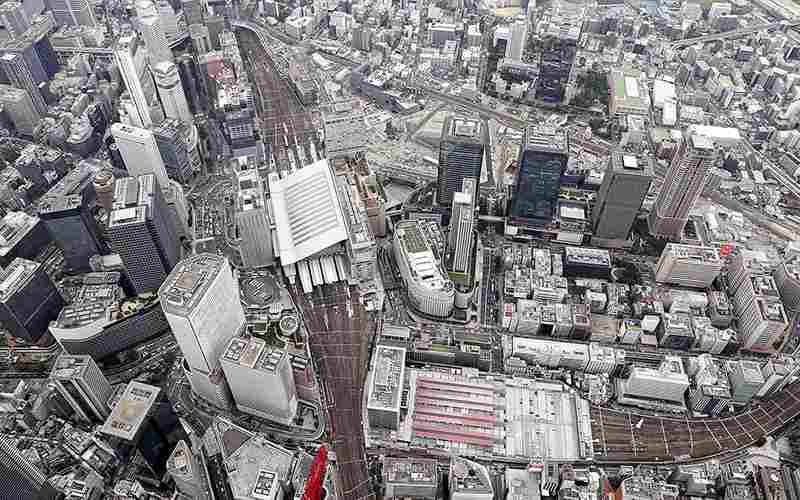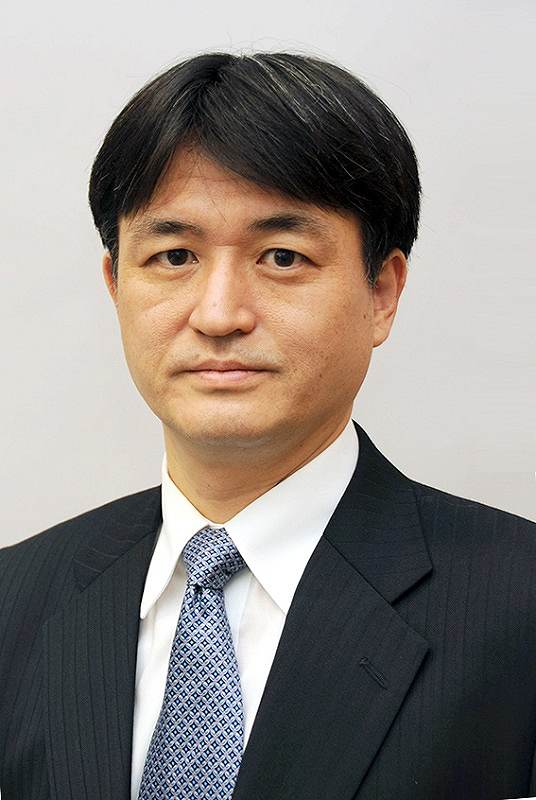
Redevelopment is underway in the Umeda area of Osaka City, which has a long history as a major transportation hub.
8:00 JST, December 3, 2022
When you stand in central Osaka City with your eyes closed, the hammering sounds that echo in many places bring back the atmosphere of Japan’s high-growth period after World War II.
In this highly developed, modern hub of western Japan, the demolition of old buildings from the Showa era (1926-1989) and the construction of new ones is now rapidly taking place. New skyscraper offices and stylish hotels are going up one after another, and the landscape of the city is changing day by day. Umeda is one such major redevelopment area in the city.
The central area of Osaka can be roughly divided into two districts: Kita (north) and Minami (south). Kita, which includes Umeda, is regarded as a business area while Minami is a bustling downtown dense with tourist spots that are rich in the typical essences of Osaka.
Historically, Umeda has been the home ground of the Hankyu Hanshin Group. The company’s founder, Ichizo Kobayashi, built railways and developed residential areas along the line. His business model was to encourage residents to ride the trains to commute to work or school and also to go on leisure trips to outlying areas on their holidays. The Hankyu line extended across the Kyoto-Osaka-Kobe area. It was a pioneering model for successful private railway businesses in Japan.
Umeda is now undergoing major redevelopment. It is the largest transport hub in western Japan, but the number of train passengers has declined due to the COVID-19 pandemic, and railway companies are bearish about restoring their passenger numbers to pre-pandemic levels. Under such circumstances, the Hankyu Hanshin Group adopted a strategy to attract more people to the terminal, aiming to generate earnings from real estate investment. It then decided to concentrate its investment in the Umeda area, renovating the adjacent shopping zone and hotels. This can be called the “Umeda Renaissance.”
Yasuo Shimada, president of Hankyu Corp., one of Japan’s largest railway operators, stresses that Umeda is the fulcrum of its business operations and that it is therefore important to increase the value of the area.
In Umeda, a redevelopment plan dubbed the “Umekita 2nd Project” is underway to transform a former 16-hectare freight yard, described as “Kansai’s last prime location,” into a new urban zone comprising offices, commercial facilities and a park. This project is expected to support the creation of new businesses through cooperation among industry, government and academia. In addition, this plan calls for construction of three large hotels plus facilities capable of hosting international conventions. Expectations for large-scale development are very high.
The ripple effect has spread to the adjacent JR Osaka Station area, where West Japan Railway Co. has announced a plan to build a new ticket gate on the west side of the station to secure access to the Umekita zone. The new gate is tentatively set to open in the spring of 2023, and a new station building will open in the autumn of 2024.
These projects will be the core of the Umeda redevelopment project. Kazuaki Hasegawa, president of JR West, said: “Greater Umeda will emerge after completion [of the project]. It will serve as the hub of urban tourism.”
In addition, the Osaka Marubiru, whose 30-story cylindrical tower near Osaka Station has long been an Umeda landmark, will be torn down and replaced with a new building over 123 meters high. Demolition work is scheduled to begin in the summer of 2023 and construction is expected to be completed by the spring of 2030.
During the Edo period (1603-1867), Osaka was Japan’s mercantile capital. It was later called the “Manchester of the Orient,” in recognition of its role in the nation’s industrialization. But its status has been on the decline as the concentration of businesses in Tokyo has progressed. In the last two decades, many corporations moved their head offices from Osaka to Tokyo. Now, Kansai’s share of Japan’s gross domestic product is only about 16%. Increasing Osaka’s presence is a long-standing issue for the Osaka and Kansai economic communities.
Redevelopment projects are progressing in tandem with preparations for Expo 2025. Moreover, a new railway, the Naniwasuji Line, is scheduled to open in 2031, connecting Kansai International Airport and Osaka Station.
Modern hammering sounds herald that Osaka is changing. The change is expected to enable the city to reemerge as a world-class growth area. Can the Umeda Renaissance help Osaka thrive again? That is the question.
Political Pulse appears every Saturday.

Hiroyuki Nakamura
Nakamura is the editor of the Economic News Department of The Yomiuri Shimbun Osaka.
"Editorial & Columns" POPULAR ARTICLE
-

Violations of Subcontract Law: Major Automakers Must Eliminate Old Practices
-

Local Governments’ Tax Revenues: Devise Ways to Correct Imbalances in Tax Sources
-

5 Japanese Business Dinner Mistakes to Avoid — and What They Taught Me About Business in Japan
-

Heavy Rains in Asia: Support for Victims, Flood-Control Measures Urgently Needed
-

Rice Coupons: A Misguided Approach to Countering Rising Prices
JN ACCESS RANKING
-

Tokyo Economic Security Forum to Hold Inaugural Meeting Amid Tense Global Environment
-

Keidanren Chairman Yoshinobu Tsutsui Visits Kashiwazaki-Kariwa Nuclear Power Plant; Inspects New Emergency Safety System
-

Imports of Rare Earths from China Facing Delays, May Be Caused by Deterioration of Japan-China Relations
-

University of Tokyo Professor Discusses Japanese Economic Security in Interview Ahead of Forum
-

Japan Pulls out of Vietnam Nuclear Project, Complicating Hanoi’s Power Plans



























